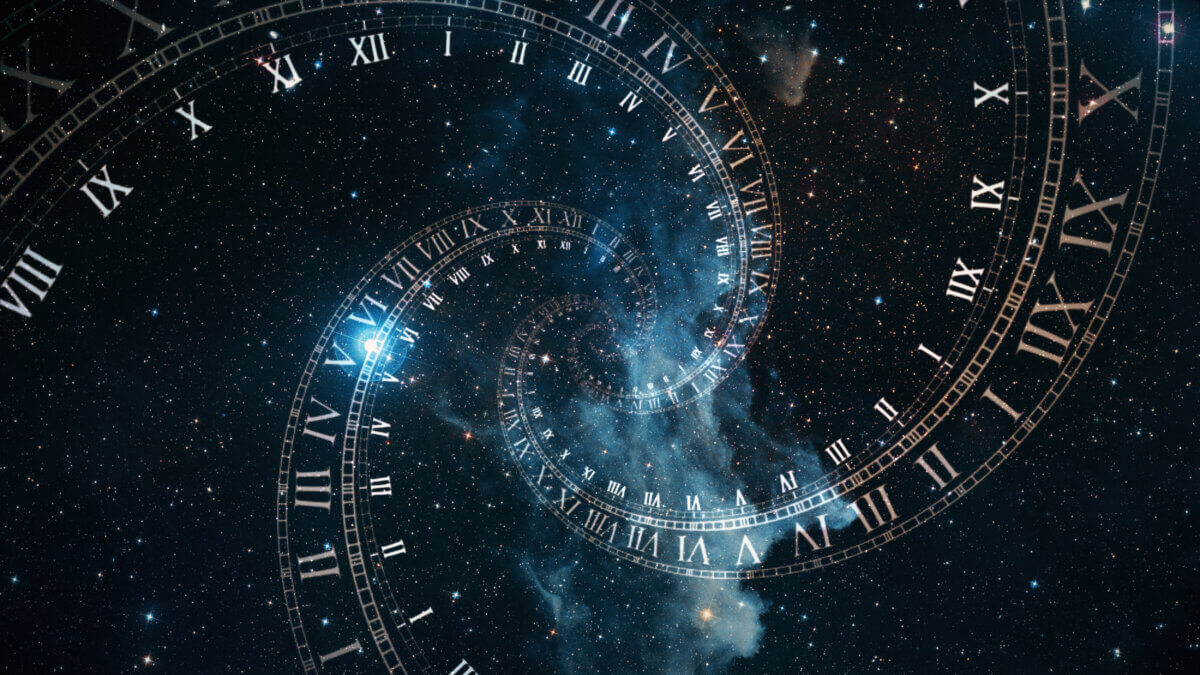CAMBRIDGE, United Kingdom — What Albert Einstein described as “spooky action at a distance,” quantum entanglement is already bizarre enough on its own. Now, mind-bending new research is throwing time travel into the mix, at least hypothetically. Scientists at the University of Cambridge have manipulated the phenomenon of quantum entanglement to simulate what could happen if someone traveled backward in time.
Not all that surprisingly, the simulations suggest that if time travel was possible, individuals such as gamblers or investors could hop in their DeLoreans, so to speak, and retroactively change their past actions and improve their outcomes in the present.
Quantum entanglement, like pretty much all of quantum physics, is a concept that seems to contradict itself at every turn. While classical physics reigns supreme among everyday-sized objects, everything changes – and gets a whole lot stranger – on the sub-atomic level. When two sub-atomic particles, such as two photons, interact and become entangled, they remain “intrinsically connected” regardless of proximity. The two particles can be separated but still correlate, or perpetually react to each other across vast distances – something that doesn’t make a whole lot of rational sense – hence the “spooky” nickname from Einstein.
While quantum entanglement has been proven and documented time and time again, the subject of backwards time travel among sub-atomic particles is a far more contentious subject among physicists. However, prior simulated models have shown how such spacetime loops could behave if they did exist.
In this latest study, the research team has connected their new approach to this topic with quantum metrology, which uses quantum theory to make highly sensitive measurements. Using this strategy, study authors have shown that entanglement can solve problems that otherwise seem impossible according to standard physics.
“Imagine that you want to send a gift to someone: you need to send it on day one to make sure it arrives on day three,” says lead study author David Arvidsson-Shukur, from the Cambridge Hitachi Laboratory, in a university release. “However, you only receive that person’s wish list on day two. So, in this chronology-respecting scenario, it’s impossible for you to know in advance what they will want as a gift and to make sure you send the right one.”
“Now imagine you can change what you send on day one with the information from the wish list received on day two. Our simulation uses quantum entanglement manipulation to show how you could retroactively change your previous actions to ensure the final outcome is the one you want.”

Quantum entanglement is largely the basis of quantum computing, or the harnessing of connected particles to perform computations far too complex for classical computers to handle.
“In our proposal, an experimentalist entangles two particles,” notes study co-author Nicole Yunger Halpern, a researcher at the National Institute of Standards and Technology (NIST) and the University of Maryland. “The first particle is then sent to be used in an experiment. Upon gaining new information, the experimentalist manipulates the second particle to effectively alter the first particle’s past state, changing the outcome of the experiment.”
“The effect is remarkable, but it happens only one time out of four!” adds Arvidsson-Shukur. “In other words, the simulation has a 75% chance of failure. But the good news is that you know if you have failed. If we stay with our gift analogy, one out of four times, the gift will be the desired one (for example a pair of trousers), another time it will be a pair of trousers but in the wrong size, or the wrong color, or it will be a jacket.”
During a typical quantum metrology experiment, photons (small particles of light) are shone onto a sample of interest and then registered with a special type of camera. In order for the experiment to be a success, the photons must be prepared in a very specific way before they reach the sample. Researchers have shown that even if they learn how to best prepare the photons only after the photons have reached the sample, they can use simulations of time travel to retroactively change the original photons.
To counteract the high odds of failure, some propose sending a huge number of entangled photons, as some will eventually carry the correct, updated information. Then, researchers would use a filter to ensure that the right photons pass to the camera, while the filter rejects the remaining “bad” photons.
“Consider our earlier analogy about gifts,” explains co-author Aidan McConnell, who carried out this research during his master’s degree at the Cavendish Laboratory in Cambridge, and is now a PhD student at ETH, Zürich. “Let’s say sending gifts is inexpensive and we can send numerous parcels on day one. On day two we know which gift we should have sent. By the time the parcels arrive on day three, one out of every four gifts will be correct, and we select these by telling the recipient which deliveries to throw away.”
“That we need to use a filter to make our experiment work is actually pretty reassuring,” concludes Arvidsson-Shukur. “The world would be very strange if our time-travel simulation worked every time. Relativity and all the theories that we are building our understanding of our universe on would be out of the window.”
“We are not proposing a time travel machine, but rather a deep dive into the fundamentals of quantum mechanics. These simulations do not allow you to go back and alter your past, but they do allow you to create a better tomorrow by fixing yesterday’s problems today.”
The study is published in the journal Physical Review Letters.
You might also be interested in:
- Best Time Travel Books: Top 5 Mind-Bending Reads Most Recommended By Experts
- Research: Mathematical model may make time travel possible
- New artificial intelligence program discovers alternative physics

Lea la versión en español en EstudioRevela.com: ¿Podemos viajar en el tiempo? Los científicos utilizan la física cuántica para demostrar cómo es posible.
